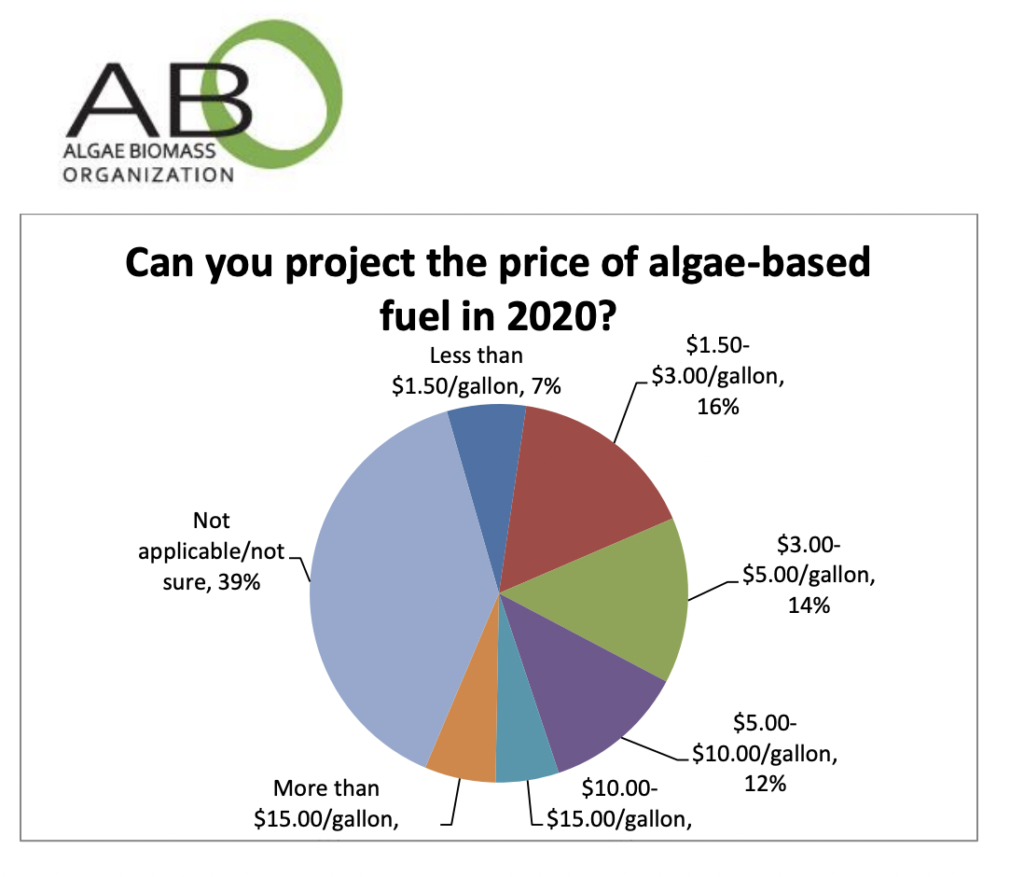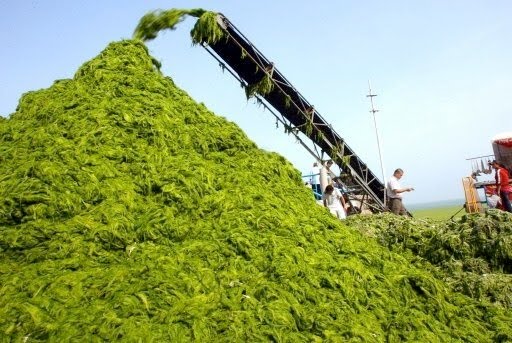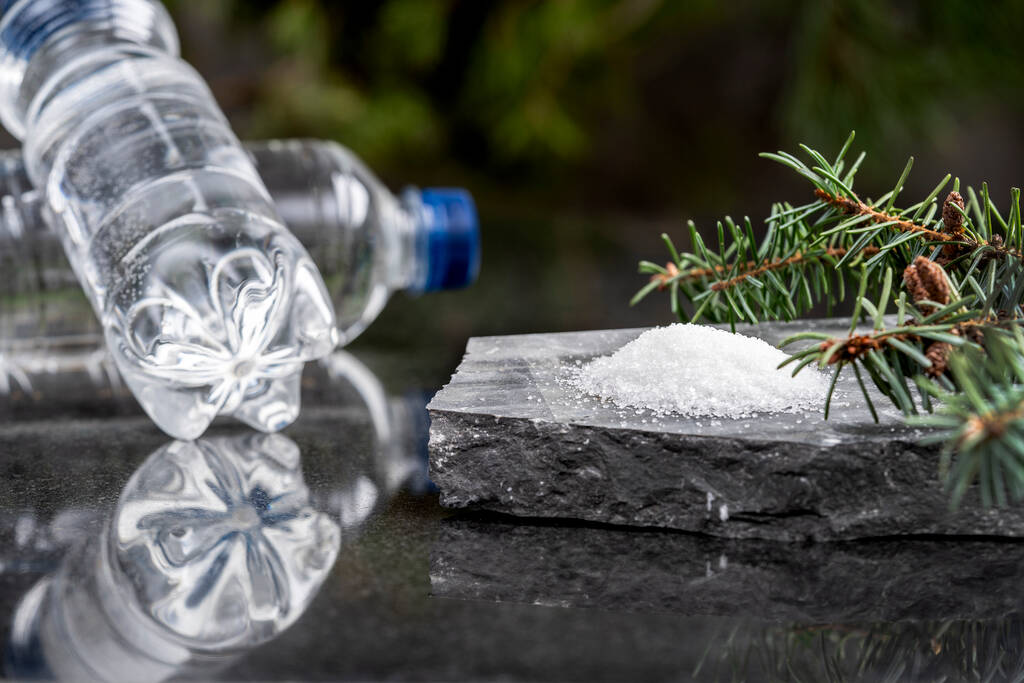Sorry about the title, but my brain is clouded with the Clash song. I must confess that I’ve been indoctrinated with classic rock music for the past 4-5 years, so they’re now sticking in my brain cells.
So, algae…remember the days of Solazyme and Sapphire Energy? I remember the former Cereplast had a subsidiary called Algaeplast dedicated to the development of algae-based plastics. Cereplast dissolved, and its assets were acquired by Trellis Earth Products, which then became part of plastic compounder Alterra Holdings; although not much focused on algae-based plastics for Alterra as far as I know. Meanwhile, Algix is still around and now has its BLOOM brand, reportedly the world’s first algae-blended EVA catering to the footwear industry.
It was tough for the algae industry when Solazyme and Sapphire Energy disappeared from the scene. Solazyme became Terravia, which was then sold to Corbion in 2017. Corbion focuses more on algae-based food and nutritional ingredients than industrial applications. Back in 2013, a survey report was published by the Algae Biomass Organisation about the possibility of algae-based biofuel becoming cost-competitive by 2020. Out of the 470 respondents, 33% were ABO members back then.

ExxonMobil was one of the few oil companies that hung on long enough to its algae-based fuel research. The company was targeting by 2025 a technical capability of producing 10,000 bbls/day of algae-based fuel, but it seems that will not come to pass when an article from Bloomberg (subscription-based) recently reported that ExxonMobil finally cut its ties with Viridos (formerly known as Synthetic Genomics and co-founded by ExxonMobil) after more than a decade of R&D partnership. The Bloomberg article reported that Viridos laid off 60% of its staff in December last year, but the company was said to still planning to move forward with its algae research. As of November 2022, Viridos reported reaching an extraction efficiency yield of more than 90% for algae oil. Exxon also ended its algae project funding with the Colorado School of Mines last year, while an Exxon-back venture with the National Renewable Energy Laboratory (NREL) is also set to end soon, according to the article.
On the other hand, Neste just recently announced that it is considering establishing an algae pilot facility in Spain to further strengthen its global raw material pool. The project is currently in the planning phase, with no final investment decision made as of yet. Due to its local algae expertise, Spain reportedly has a favourable environment and central location with robust infrastructure in the surrounding regions for piloting algae developments. Neste has long been on the hunt for sustainable lipids-based feedstock supply given the company’s growing renewable diesel operations, which require fats and oils feedstock.
Neste is currently diversifying its raw materials portfolio with lower-quality waste and residue raw materials like acid oils, palm effluent sludge and wastewater-derived grease, and in future, also looking in lignocellulosic, municipal solid waste and algae. The company is also already involved in developing and commercialising plastic waste-based crude oil that many ‘circular chemicals’ productions are already using. We will talk about circular chemicals (that use the mass balance approach) at another time.
Back to algae, I searched past posts on the blog, and it turned out that in 2014, Neste was previously working with Renewable Algal Energy, a US-based biomass producer, for potential algae oil off-take, which I guess didn’t pan out. I am not sure if the company is still in operation.
PETRONAS Research Sdn Bhd (PRSB), a subsidiary of the Malaysia-based oil and energy company PETRONAS, announced last month that it has partnered with SEDC Energy, a subsidiary of Sarawak Economic Development Corporation, to develop production technologies for microalgae oils. The collaboration will include cultivating, harvesting and extracting crude algae oil that will be refined to produce sustainable aviation fuel (SAF). Both parties will also look into the commercial production requirements for crude algae oil, including developing algae strains with high oil content at a competitive production cost.
Various US government research departments under the Department of Energy (DOE), including NREL, have been working for more than a decade on various technologies and processes that can lower the costs of usage and production of microalgae-based fuels, including co-locating algal biorefineries with biofuel production that can monetise co-products such as high-protein solid algal residuals. The DOE announced this month a $25.5 million funding under the project “Reducing Agricultural Carbon Intensity and Protecting Algal Crops” which aims to enable the sustainable use of domestic biomass and waste resources such as agricultural residues and algae in the production of low-carbon biofuels and bio-products. The funding will support projects that cultivate and protect algae crops from predation, organic competition and pest infestation.
Researchers from the Institute for Sustainable Futures (ISF) and the Climate Change Cluster (C3) within the University of Technology Sydney (UTS) in Australia are looking into the potential of algal bioplastics by isolating polysaccharides from both micro and macroalgae to create polymer blends. C3 have reportedly developed green chemistry methods for extracting the polysaccharides. Some of the prototypes developed include carrageenan-glycerol, carrageenan-water, ulvan-starch, PVA-carrageenan-glycerol. Australian production of seaweed is still a small industry, so that’s a major challenge to consider. Worldwide, algae (primarily seaweeds) make up around 30% of aquaculture production, according to the UTS researchers. Production of microalgae biomass also has several major challenges, including the need for high nutrient loadings, possible toxic compounds and unstable algae growth and productivity.





One response to “Algae: Should they stay or should they go?”
Checkerspot is sort of a descendent of Solazyme too. They seem to be doing a good job developing markets for specialty materials based on algal oils.
Otherwise, my take is similar to yours: people continue to invest money in macro- and micro-algae, and it’s not clear they have solved the hurdles that stopped earlier efforts, specifically capex, contamination, and de-watering.